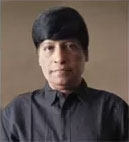
Breaking the chains of legacy: In Maharashtra, grassroots leaders from non-political backgrounds are challenging the dynastic strongholds that have defined the state’s politics for decades. As young professionals, social activists, and civic-minded youth enter the fray, they bring fresh perspectives and a focus on ground-level issues, pushing Maharashtra toward a new era of inclusive governance
In Maharashtra, dynastic politics has long dominated the political turf. Generations of the same families have held power, with politics treated as a family legacy and passed down to sons, daughters, and sometimes even distant relatives. While dynasties bring name recognition, established networks, and vast resources, they often leave little room for outsiders, especially grassroots leaders with no prior political lineage. However, in the lead-up to the current assembly elections, Maharashtra is witnessing a new wave of leaders rising from humble beginnings, challenging traditional power structures, and resonating with the grassroots. These fresh faces, who hail from diverse backgrounds, are shifting the state’s political narrative and pushing beyond the limits of dynastic control.
Maharashtra’s political landscape has seen strong dynastic footholds across major parties, shaping the state’s governance for decades. The Thackerays in the Shiv Sena, the Pawars in the Nationalist Congress Party (NCP), and the Vikhe-Patils in Ahmednagar are quintessential examples. The Thackeray dynasty, starting with Bal Thackeray, grew to prominence by espousing Marathi pride and Hindutva, and over time, both Uddhav and Aditya Thackeray became faces of Shiv Sena. Similarly, NCP’s Sharad Pawar, a towering political figure, has paved the way for his daughter Supriya Sule and nephew Ajit Pawar. While dynasties like these provide stability and continuity, the lack of new voices has often led to a disconnect with the youth and common citizens.
The rise of grassroots leaders
In recent years, Maharashtra’s political scenario has begun shifting, with non-dynastic leaders rising through the ranks. These new entrants bring fresh perspectives and grassroots understanding, qualities often missing in dynastic leaders who are removed from on-the-ground realities. Many of these newcomers do not come from influential political families; instead, they are social activists, professionals, or young leaders whose primary appeal lies in their hands-on approach to solving local issues.
Social activists are perhaps the most powerful examples of non-dynastic leaders challenging Maharashtra’s political status quo. Their appeal lies in their demonstrated commitment to the public cause rather than party politics. Take Jitendra Awhad, for instance, whose career started with student activism and later evolved into a full-fledged political career within the NCP. Awhad has brought significant attention to housing and economic issues impacting the urban poor, cementing his reputation as a leader who champions the causes of the common people. Likewise, Ulka Mahajan, a long-time social activist focused on farmers’ rights, entered the political domain to directly influence policies for rural Maharashtra. Her candidacy speaks to voters’ aspirations for leaders with genuine social service credentials rather than family connections.
Another significant trend is the entry of young leaders without political lineage, often driven by disillusionment with traditional parties. These candidates, who are mostly from middle-class backgrounds, resonate with the aspirations of Maharashtra’s youth. For example, Vishal Khedkar, who began as a local youth leader, rose to prominence due to his efforts in providing career counselling and addressing youth unemployment. By participating actively in his constituency’s civic issues, Khedkar managed to establish a rapport with young voters who previously had little faith in political candidates. Another example is Manisha Dhatrak, an engineer-turned-politician who advocates for job creation and women’s rights in rural areas, a sector often overlooked by political dynasties focusing on urban voter banks.
In recent elections, professionals from diverse fields, such as law, medicine, and engineering, have entered the fray, eager to use their expertise to bring about systemic change. Dr. Ravi Jadhav, a doctor known for his work in rural health, is one such candidate who exemplifies this new wave of professional politicians. Driven by firsthand experiences of Maharashtra’s under-resourced rural health infrastructure, Jadhav’s campaign emphasizes healthcare reform and aims to create policies informed by his medical background. Similarly, Anjali Kanade, a lawyer known for her work on human rights and social justice, has chosen to enter the political sphere, bringing a sharp legal perspective to the issues of women’s safety and minority rights.
This wave of non-dynastic candidates is gaining traction partly due to Maharashtra’s changing voter demographics. The urban-rural divide is narrowing, with young people in rural areas now having similar aspirations as their urban counterparts. This demographic shift means that voters are less likely to be swayed by family legacies and are instead prioritizing leaders who resonate with their day-to-day struggles.
Additionally, the failures of dynastic leaders to address systemic issues like agrarian distress, unemployment, and healthcare have left many disillusioned. The COVID-19 pandemic further highlighted the need for leaders who understand ground realities and can deliver efficient solutions. Grassroots leaders, many of whom worked on the front lines during the pandemic, have become popular for their practical problem-solving approach, unlike many dynasty-driven leaders who were criticized for being distant or ineffective during the crisis.
Challenges ahead for non-dynastic leaders
While the rise of non-dynastic leaders is promising, their journey is far from easy. Without the strong organizational backing, resources, and influence that dynastic leaders enjoy, these newcomers face uphill battles in securing party tickets, funding campaigns, and navigating Maharashtra’s complex political networks. Despite their ground-level popularity, they often struggle to gain party endorsements, as established parties tend to favour candidates from influential families who can mobilize resources quickly.
Furthermore, the political environment in Maharashtra is highly polarized, with shifting alliances between parties like the Shiv Sena, NCP, BJP, and Congress. For non-dynastic leaders, aligning with a party that shares their vision while maintaining their integrity can be challenging, especially when coalition demands sometimes necessitate compromising on personal values or policy priorities.
The emergence of these non-dynastic leaders suggests that Maharashtra politics is on the cusp of a transformation. Should these leaders find success in the upcoming assembly elections, they could serve as powerful examples for the youth and other aspiring politicians, gradually creating a more inclusive and democratic political space. Dynasties may continue to play a role in Maharashtra, but the success of grassroots leaders could pave the way for a hybrid political structure where merit and public service stand on par with legacy and influence.
Moreover, as non-dynastic leaders gain ground, they may also influence existing dynastic politicians to refocus on grassroots issues, adopt a more inclusive approach, and deliver results that cater to a broader audience. The infusion of fresh perspectives from grassroots leaders could foster healthier competition among parties and prompt a much-needed shift towards policies that prioritize the welfare of the common man.
Conclusion
In the context of Maharashtra’s upcoming assembly elections, the rise of non-dynastic leaders is a powerful signal of change. By stepping into the political arena, these leaders are challenging dynasties that have controlled Maharashtra’s political landscape for decades. Whether social activists, young professionals, or civic-minded youth, these new faces offer an alternative model of leadership driven by merit, dedication, and an intimate understanding of the issues that matter most to Maharashtra’s citizens. While dynasties are unlikely to vanish entirely, the growing acceptance of non-dynastic leaders by the public reflects an evolving political landscape. With the support of a changing electorate, Maharashtra may be on the brink of a more balanced, inclusive, and responsive governance model that aligns with the aspirations of its people.

A Column By
Raju Korti – Editor
The Resource 24X7
A Journalist With 4 Decades of Experience With Leading Media Houses.
